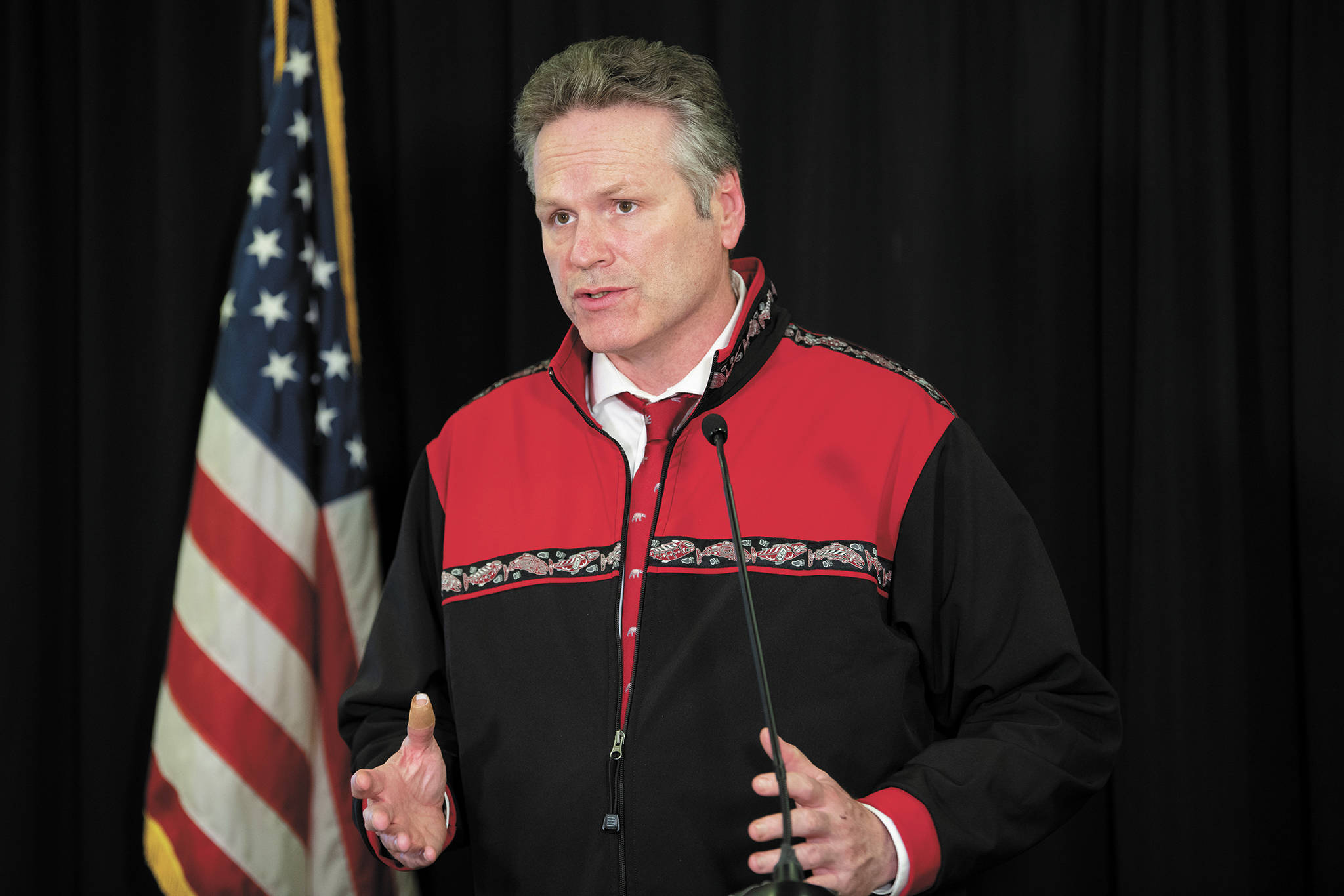As new cases of COVID-19, the illness caused by the novel coronavirus, continue their slow, steady increase in Alaska, Gov. Mike Dunleavy is looking ahead at plans for how sectors of the state’s economy can begin to reopen.
The announcement of seven new COVID-19 cases on Thursday marks yet another small increase in a row, bringing the state’s total number of cases to 300. Alaska has not seen a larger single-day increase in cases than the 22-case spike reported on April 7.
The new cases announced Thursday by the Department of Health and Social Services are in the Anchorage area (four) and Juneau (two), and Kodiak (one). This is the first confirmed case for the island.
DHSS announced one new hospitalization Thursday for a cumulative total of 35. This number includes people who have since died or have since recovered and gone home. There have been no new deaths and the state’s total still rests at nine. Of the new cases, two are female and five are male. One of them is a child under the age of 10; two are people aged 20-29; two are people aged 30-39; one is aged 50-59 and one is aged 60-69.
Durning a press conference with Chief Medical Officer Dr. Anne Zink, Dunleavy spoke about the guidelines rolled out by President Donald Trump’s administration on Thursday. Walking back on his previous stance that the president has absolute authority to dictate when the country would end lockdowns and restrictions, Trump’s guidelines concede that individual states have the right to decide when to loosen restrictions, and suggest May 1 as a target date for doing that.
“A lot of what was rolled out is similar to what we’re all talking about,” Dunleavy said of the guidelines during the press conference. “There was nothing — when I say nothing new, it’s, we’re all talking about the same science, we’re all talking about the same virus. We’re all talking about how that virus manifests itself and how that virus impacts cities and states.”
Dunleavy acknowledged Alaska’s steady, gradual increase of COVID-19 cases, but said the state is fortunate to not have seen a large or overwhelming increase.
“But we haven’t seen the large spike that we had anticipated, especially if we had not done the social distancing and the protocols, advisories and mandates that we had,” he said.
As a result of the work that Alaskans have done, Dunleavy said his administration is preparing to open up sectors of Alaska’s economy slowly. He did not give a specific time frame.
Alaska rolled back one of its previous health mandates on Wednesday, announcing that certain health care providers and facilities will be able to begin providing services again, provided they adhere to guidelines for safety and social distancing.
Dunleavy said the state is going to continue looking at ways to open Alaska’s economy and is in conversations with stakeholders from various industries, including retail and tourism.
“We want to do this as quick as possible, but it’s very important that, you know, I reiterate, not at the expense of the health of Alaskans,” he said. “We will constantly be looking at these metrics, constantly be looking at this data, and as we open up parts of the economy, the moment we see something that is a spike, a cluster, then we’re going to act very quickly.”
Dunleavy said the conversations with retail and tourism industry representatives revolve around how to open up those sectors without causing a spike in COVID-19 cases. He said this can be accomplished by doing things differently than have been done in the past — things like face masks becoming the norm for both workers and customers. The state is also continuing to work on building capacity in health care sector, both in terms of treating patients and in terms of testing. As of Thursday, the state has tested 8,735 people for the disease.
Asked specifically about the May 1 target date floated by the Trump administration, Dunleavy said Alaska was one of the first states to start preparing for the onset of COVID-19.
“Although we may not have been one of the first, we certainly were part of I think a number of states that quietly began to think about how we’re going to deal with getting things back to normal and having sectors of our society open back up,” he said. “And so the idea of May 1 — I mean, that’s a target that the president and his administration has put out there. It’s something to look at.”
Dunleavy said decisions about opening up more sections of the state’s economy will be based on the data coming from the Section of Epidemiology. It will require an Alaska-specific approach, he said.
“We’re very different from any other state in terms of being detached from the rest of the Lower 48, but also a lot of rural, isolated communities off the road — a lot of those communities without the health care facilities that a lot of the major cities and even the smaller cities down south have,” Dunleavy said. “So, we’re going to be charting our own course that works for Alaska and keeps Alaska healthy, but gets us back to opening up society as soon as we possibly can, again, without risking the health of Alaskans.”
Dunleavy said it’s the state’s relatively low infection numbers compared to other states that will allow the Alaska to begin to “march towards” a society that is closer to “normal.”
Reach Megan Pacer at mpacer@homernews.com.

